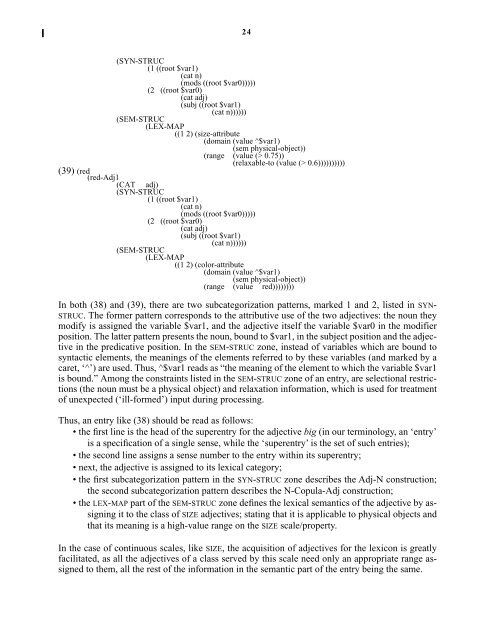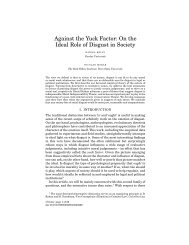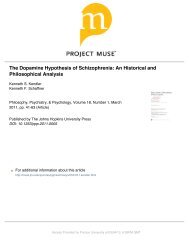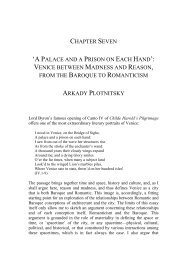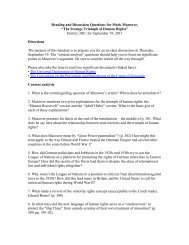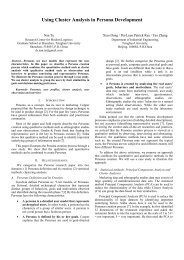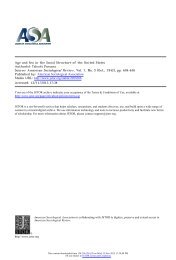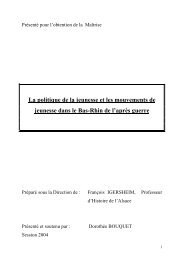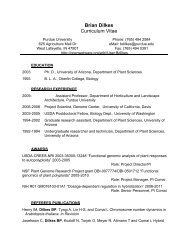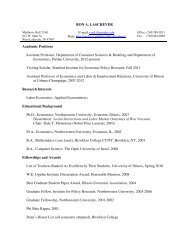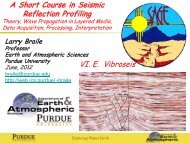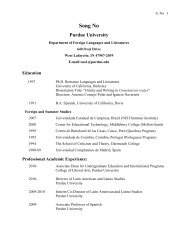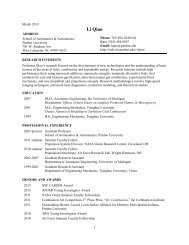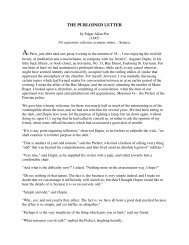Lexical Semantics of Adjectives - CiteSeerX
Lexical Semantics of Adjectives - CiteSeerX
Lexical Semantics of Adjectives - CiteSeerX
You also want an ePaper? Increase the reach of your titles
YUMPU automatically turns print PDFs into web optimized ePapers that Google loves.
(SYN-STRUC<br />
(1 ((root $var1)<br />
(cat n)<br />
(mods ((root $var0)))))<br />
(2 ((root $var0)<br />
(cat adj)<br />
(subj ((root $var1)<br />
(cat n))))))<br />
(SEM-STRUC<br />
(LEX-MAP<br />
((1 2) (size-attribute<br />
(domain (value ^$var1)<br />
(sem physical-object))<br />
(range (value (> 0.75))<br />
(relaxable-to (value (> 0.6))))))))))<br />
(39) (red<br />
(red-Adj1(CAT<br />
adj)<br />
(SYN-STRUC<br />
(1 ((root $var1)<br />
(cat n)<br />
(mods ((root $var0)))))<br />
(2 ((root $var0)<br />
(cat adj)<br />
(subj ((root $var1)<br />
(cat n))))))<br />
(SEM-STRUC<br />
(LEX-MAP<br />
((1 2) (color-attribute<br />
(domain (value ^$var1)<br />
(sem physical-object))<br />
(range (value red))))))))<br />
24<br />
In both (38) and (39), there are two subcategorization patterns, marked 1 and 2, listed in SYN-<br />
STRUC. The former pattern corresponds to the attributive use <strong>of</strong> the two adjectives: the noun they<br />
modify is assigned the variable $var1, and the adjective itself the variable $var0 in the modifier<br />
position. The latter pattern presents the noun, bound to $var1, in the subject position and the adjective<br />
in the predicative position. In the SEM-STRUC zone, instead <strong>of</strong> variables which are bound to<br />
syntactic elements, the meanings <strong>of</strong> the elements referred to by these variables (and marked by a<br />
caret, ‘^’) are used. Thus, ^$var1 reads as “the meaning <strong>of</strong> the element to which the variable $var1<br />
is bound.” Among the constraints listed in the SEM-STRUC zone <strong>of</strong> an entry, are selectional restrictions<br />
(the noun must be a physical object) and relaxation information, which is used for treatment<br />
<strong>of</strong> unexpected (‘ill-formed’) input during processing.<br />
Thus, an entry like (38) should be read as follows:<br />
• the first line is the head <strong>of</strong> the superentry for the adjective big (in our terminology, an ‘entry’<br />
is a specification <strong>of</strong> a single sense, while the ‘superentry’ is the set <strong>of</strong> such entries);<br />
• the second line assigns a sense number to the entry within its superentry;<br />
• next, the adjective is assigned to its lexical category;<br />
• the first subcategorization pattern in the SYN-STRUC zone describes the Adj-N construction;<br />
the second subcategorization pattern describes the N-Copula-Adj construction;<br />
• the LEX-MAP part <strong>of</strong> the SEM-STRUC zone defines the lexical semantics <strong>of</strong> the adjective by assigning<br />
it to the class <strong>of</strong> SIZE adjectives; stating that it is applicable to physical objects and<br />
that its meaning is a high-value range on the SIZE scale/property.<br />
In the case <strong>of</strong> continuous scales, like SIZE, the acquisition <strong>of</strong> adjectives for the lexicon is greatly<br />
facilitated, as all the adjectives <strong>of</strong> a class served by this scale need only an appropriate range assigned<br />
to them, all the rest <strong>of</strong> the information in the semantic part <strong>of</strong> the entry being the same.


